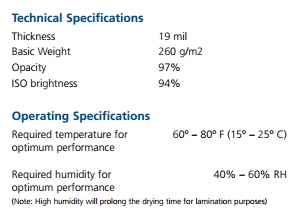Aside from what printer to purchase, one of the most common questions I get to be asked is what paper to choose.
One of the most important choices you’d make when printing is your choice of substrate. Today, with a multitude of options, one can easily find himself lost and confused. Trying and testing fine art papers is expensive and time-consuming. I know, I’ve been there. Without diving too much on the technical side, let me try to help you out narrowing it down. You can start by doing either or all of the following:
- See it for yourself. Expose yourself to different kinds of prints. Check them out. Touch them if you can. Do you see your work being in its best with that kind of media? Metal, wood, paper, canvass – all sorts. Then figure out what attracts you more.
- Consult with your trusted printer.
- Request/Purchase a Sample Pack from the paper manufacturer. A sample pack normally consists of 2 sheets per variant – in A4 size.
When choosing a paper for your work, there are technical and aesthetic considerations.
Technical
- Gamut – Print color gamut is the range of colors a printer/ink/paper combination the paper can reproduce. Gamut affects only highly saturated colors. Print Gamut is also affected by the color space.
- Brightness – Brightness is a measurement of light reflectance of a specific wavelength of blue light. Simply put – brightness represents a more narrow measurement of light reflectance than whiteness. Some papers use optical brighteners (OBA’s) to extend the paper’s tonal range.
- Dmax – How black is black. It is a measure of the deepest black tone a printer/ink/paper combination can reproduce. Prints with poor Dmax look pale and weak. You would notice that glossy paper produces blacker black than matte paper.
- Longevity – It describes the media’s resistance to fading.
- Durability – The media’s ability to resist abrasion, wobbling, kinking, folding and scratching.

Technical fact sheets can be easily obtained through the paper manufacturer’s website
If you’re wondering how come some of the technical information are not disclosed by the paper manufacturer, it is because some traits are paper/ink and printer combination. And they wouldn’t know what you’re using.
Aesthetic
- Synthetic or Organic – Cotton or Resin Coated (RC)
- Reflectivity – Glossy or Matte?
- Texture – Smooth or textured?
- Weight – Thick or thin papers?
- Edges – Deckled?

Deckled Edges Awagami Bizan – Japanese handmade paper
Matte VS. Glossy
Matte papers are based on wood or cotton rag fiber. Their appeal lies in their appearance and feel. They have a texture like those used for painting (ig: water-color paper) – a look and tactile experience that is simply absent in photo papers. Matte papers also exhibit fewer glare. Plastic (resin coated) papers have the advantage of much higher reflectivity and as such they allow for the use of Photo Black ink, rather than the Matte Black ink that fiber requires. This produces blacker blacks and more saturated colours.
In short, if you want your images to be strong – choose glossy. If you want your images to be subtle – choose matte. Hard to explain really. One needs to see a single image printed on both types of paper to judge. Personally, matte looks more elegant. I have seen original prints of the masters both on silver gelatin (resin coated paper) and Platinum (cotton rag fiber paper) – and the latter appeals to me more.
Personal Choice
I believe that every photographer that prints his work should have at least 2 personal papers. One glossy and the other, matte. Or 2 papers of the same kind (matte or glossy) but one with a whiter base and the other, a warm base. This would not only make your life easier when printing, but it would also serve as a signature paper for you. Consistency not only in your choice of subject/post-processing but also in your presentation can help in having your own style. Here’s my personal choice for my work.
Epson Fine Art Velvet (Matte)
Pros: Textured – very pronounced. White base. The texture somehow adds sharpness to the image. Wide gamut. One of the widest there is with matte papers.
Cons: A bit thin and can easily be scratched. Ink dries in minutes but need hours to cure (stabilize) Needs to be imported.
Hahnemule Photo Rag 308 (Matte)
Pros: Smooth. Thick. Heavy. White Base. Wide gamut.
Cons: Expensive. Needs to be imported.
Tecco Photo Rag (Matte)
Pros: Warm base. Thick. Heavy.
Cons: Needs to be profiled. I did not like the generic profile from the manufacturer that much.
As you have noticed, I am more of a matte person but when I have to, I use Ilford Gold Fibre Silk and Hahnemule Baryta for my glossy.
Note that there are other considerations such as availability (in your locality) support, user experience/feedback and price. A photographic print is a personal preference, and your choice of paper greatly affects your work. With the considerations above, I hope that you have narrowed your choices down.
Happy printing!
Recent Comments